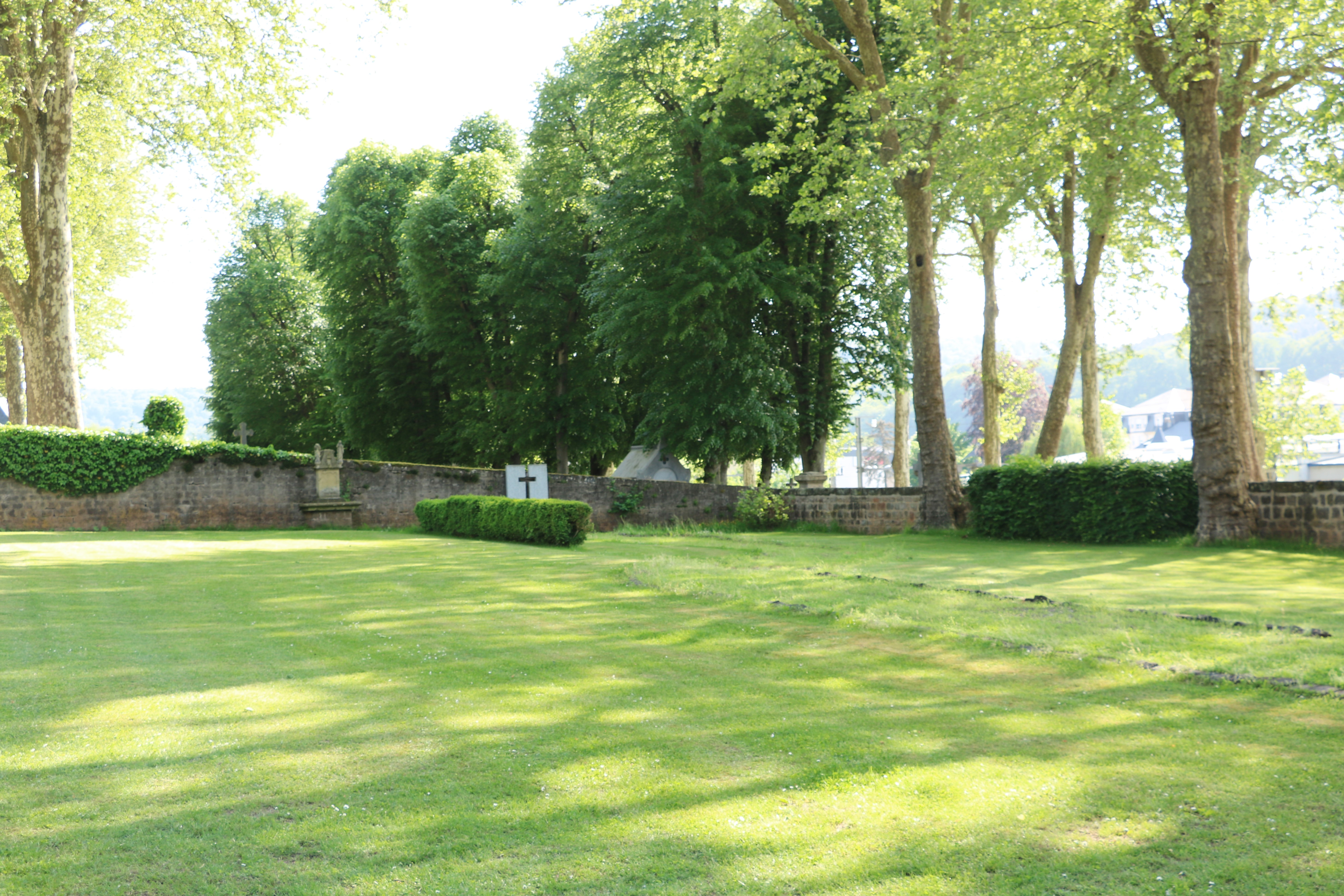(Un)forgotten Deaths
Only one year after its official opening, the Hospice Central had to grieve the first death of one of its inhabitants, a pauper (indigente). In the following months, the number of deaths among the inhabitants rose quickly. The first patients who died inside the Hospice were buried in the regional cemetery of Ettelbruck; however, those funerals became too expensive for the Hospice. The normal price for a single funeral was 14 francs, which were paid by the office for communal help. To avoid unnecessary expenditures, the Hospice eventually built its own cemetery, which was divided into two halves, situated on the right and left of the entrance to the regional cemetery in the Ditgesbaach. The project was approved by the pro-vicar of Luxembourg (EVRARD, p. 4).
This cemetery was reserved for the inhabitants who died inside the Hospice without being identified. In the early years of the asylum, this number was very high, as psychiatry worked as a “total institution”, just like military and religious institutions, where the daily routine was restrained to a limited space. Funerals were organised without any public effort. Thus, the local pastor did not have to sound the death knell anymore and the tombs, in which multiple persons were usually buried, were generally covered in white crosses. There were no signs of identification, partially because many were not identified, and partially because their families wanted to avoid a bad reputation. As the years went by, the so-called cimetière des fous was heavily neglected and the crosses degraded more and more.

Until the 1980s, over 800 persons were buried here. But since 1974, the neuropsychiatric hospital (Hôpital Neuro-Psychiatrique de l’État, HNPE), which recently became a general hospital, developed more and more from a closed institution to an ‘open’ one, and the patients received more freedom. The number of patients who died without being identified heavily diminished and the cimetière des fous was not needed anymore. The degraded crosses were finally removed in the mid-1990s.
In the two parts of the cimetière des fous, not only patients, but also doctors and nursing sisters were buried. The first half was bought by the commune of Ettelbruck and is now a part of the actual cemetery. The other half only consists of an empty and walled lawn. The demolition of the wall around this territory had been proposed, but the commune decided against this idea. Along the wall, a monument can be found today, which consists of a marble block with a hole in the form of a cross. This monument symbolises the opening of psychiatry and should have given an overview above the regional cemetery. All that is left from the ancient cimetière des fous is an iron badge which was placed on a grave by the friend of a patient who is buried here.
In the regional cemetery of Ettelbruck, a special grave can be found, which is reserved specifically for the patients who died inside the hospital without being identified, but it is only rarely used. The last opening of the grave was carried out more than 20 years ago.
We would like to thank Dr Yves De Smet and Dr Thomas Kolnberger for their help.
